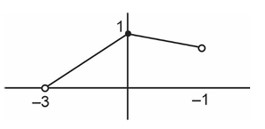What is the difference between real and imaginary numbers?
-
1 Answer
-
Students have confusions understanding the difference between the real and imaginary number and how they form complex number. Well here is the simple explaination, Real numbers include all the rational and irrational numbers such as 0, 1,2.78, 9.9999. etc. while imaginary numbers involve i, the square root of –1. A combination of both real and imaginary number forms a complex number. for example; 3 + 4.
Similar Questions for you
...(1)
–2α + β = 0 …(2)
Solving (1) and (2)
a = 1
b = 2
-> a + b = 3
Start with
(1)
(2)
(3) GTE : 4!, GTN: 4!, GTT : 4!
(4) GTWENTY = 1
⇒ 360 + 60 + 60 + 24 + 24 + 24 + 1 = 553
->g(x) = |x|, x Î (–3, 1)

Range of fog(x) is [0, 1]
Range of fog(x) is [0, 1]
First term = a
Common difference = d
Given: a + 5d = 2 . (1)
Product (P) = (a1a5a4) = a (a + 4d) (a + 3d)
Using (1)
P = (2 – 5d) (2 – d) (2 – 2d)
-> = (2 – 5d) (2 –d) (– 2) + (2 – 5d) (2 – 2d) (– 1) + (– 5) (2 – d) (2 – 2d)
= –2 [ (d – 2) (5d – 2) + (d – 1) (5d – 2) + (d – 1) (5d – 2) + 5 (d – 1) (d – 2)]
= –2 [15d2 – 34d + 16]
at
-> d = 1.6
16cos2θ + 25sin2θ + 40sinθ cosθ = 1
16 + 9sin2θ + 20sin 2θ = 1
+ 20sin 2θ = 1
– 9cos 2θ + 40sin 2θ = – 39
48tan2θ + 80tanθ + 30 = 0
24tan2θ + 40tanθ + 15 = 0
-> ,
So will be rejected as
Option (4) is correct.
Taking an Exam? Selecting a College?
Get authentic answers from experts, students and alumni that you won't find anywhere else
Sign Up on ShikshaOn Shiksha, get access to
- 65k Colleges
- 1.2k Exams
- 681k Reviews
- 1800k Answers
